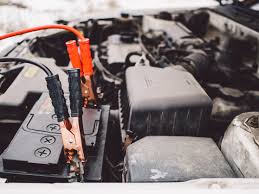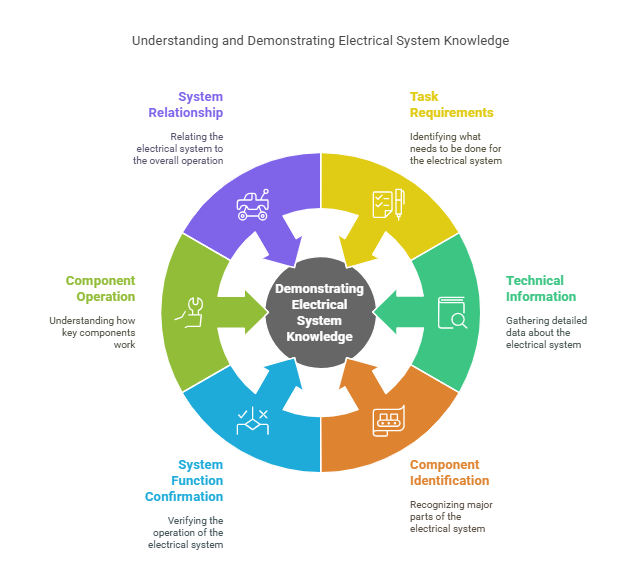Understanding Automotive Electrical Systems and Components
Posted by SkillMaker in Mar, 2025
What is a concise description of identifying automotive electrical systems and components?

Identifying automotive electrical systems and components involves the understanding and recognition of the interconnected elements responsible for powering and controlling various functions within a vehicle. This includes recognizing wiring, circuits, and electronic devices that work together to ensure a vehicle’s proper operation.
Listen to this article as a podcast
Why do people in the Automotive industry need to identify automotive electrical systems and components?
Professionals in the automotive industry need to identify automotive electrical systems and components to diagnose, maintain, and repair vehicles effectively. This knowledge is crucial for ensuring vehicle safety, enhancing performance, and reducing operational costs. Understanding these systems also aids in implementing technological advancements and adhering to regulatory standards.
“Mastering automotive electrical systems is pivotal for vehicle efficiency, safety, and innovation in modern automotive technology.”
What are the key components or elements of automotive electrical systems?
Key components of automotive electrical systems include:
- Battery: Stores and provides electrical energy to start the engine and power accessories.
- Alternator: Generates electrical power to recharge the battery and supply electricity when the engine is running.
- Starter Motor: Initiates engine combustion.
- Control Units: Electronic modules such as the ECU (Engine Control Unit) managing various functions.
- Wiring and Connectors: Conduits for electrical current, linking components together.
What key terms, with descriptions, relate to automotive electrical systems?

Registered Trademark®
- Circuit: A closed path through which electricity flows.
- Fuse: Protective device preventing overcurrent.
- Relay: Electrically operated switch used in circuits.
- Ground: Completes electrical circuit, connecting to Earth.
- Continuity: Unbroken connection in an electrical circuit ensuring operation.
Who is typically engaged with operating or implementing automotive electrical systems and components?
Automotive electricians, mechanics, and engineers are typically engaged in implementing and operating automotive electrical systems and components. These professionals work to ensure the correct functioning, maintenance, and innovation of automotive electrical technologies.
How do automotive electrical systems and components align or integrate with other components of the Automotive industry in Australia?

Automotive electrical systems are integral to vehicle operations, working symbiotically with mechanical systems to enhance vehicle performance, safety features, and driver convenience. As vehicles advance technologically, electrical systems are increasingly vital for new functions like autonomous driving aids, infotainment, and emissions control, aligning with industry innovation goals.
Where can the student go to find out more information about automotive electrical systems and components?
What job roles would be knowledgeable about automotive electrical systems and components?
Roles include:
- Automotive Electricians
- Automotive Mechanics
- Automotive Engineers
- Vehicle Technicians
- Diagnostic Technicians
What is identifying automotive electrical systems and components like in relation to sports, family, or schools?

In relation to sports, identifying automotive electrical systems is akin to a coach analysing players’ roles, understanding team dynamics for effective strategy execution.
In a family context, it’s like maintaining household appliances, ensuring each device operates smoothly.
For schools, it parallels systematic subject learning, building foundational knowledge students build upon for future applications.
(The first edition of this post was generated by AI to provide affordable education and insights to a learner-hungry world. The author will edit, endorse, and update it with additional rich learning content.)
(Skillmaker – 2025)

 Post Tagged with
Post Tagged with